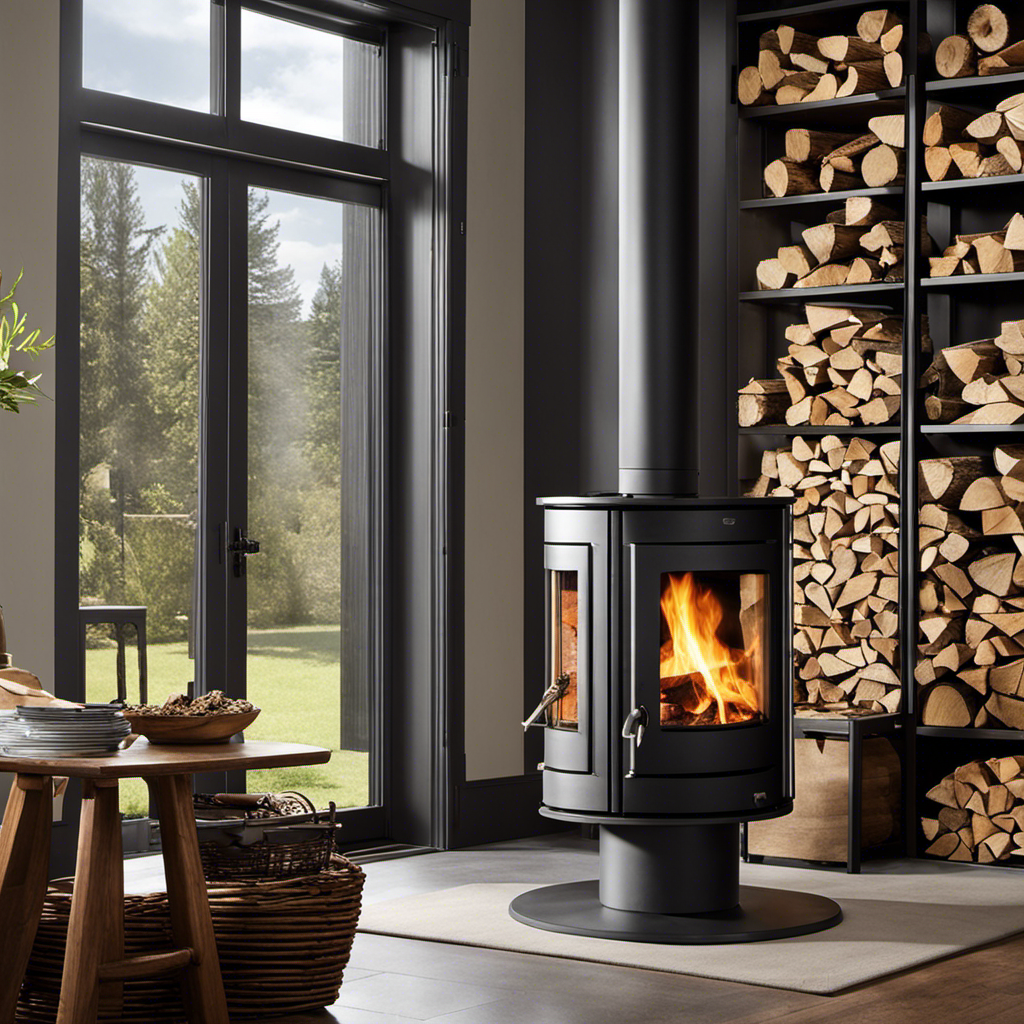I have the solution to the pressing question you have been asking: How frequently should you clean out the ash from your wood-burning stove?
Let me share some expert advice and tips on maintaining a clean and efficient wood stove.
Find out the importance of regular ash cleaning, factors to consider when determining cleaning frequency, and the recommended cleaning schedule.
Plus, I’ll reveal the telltale signs that your wood stove needs a good ash cleaning.
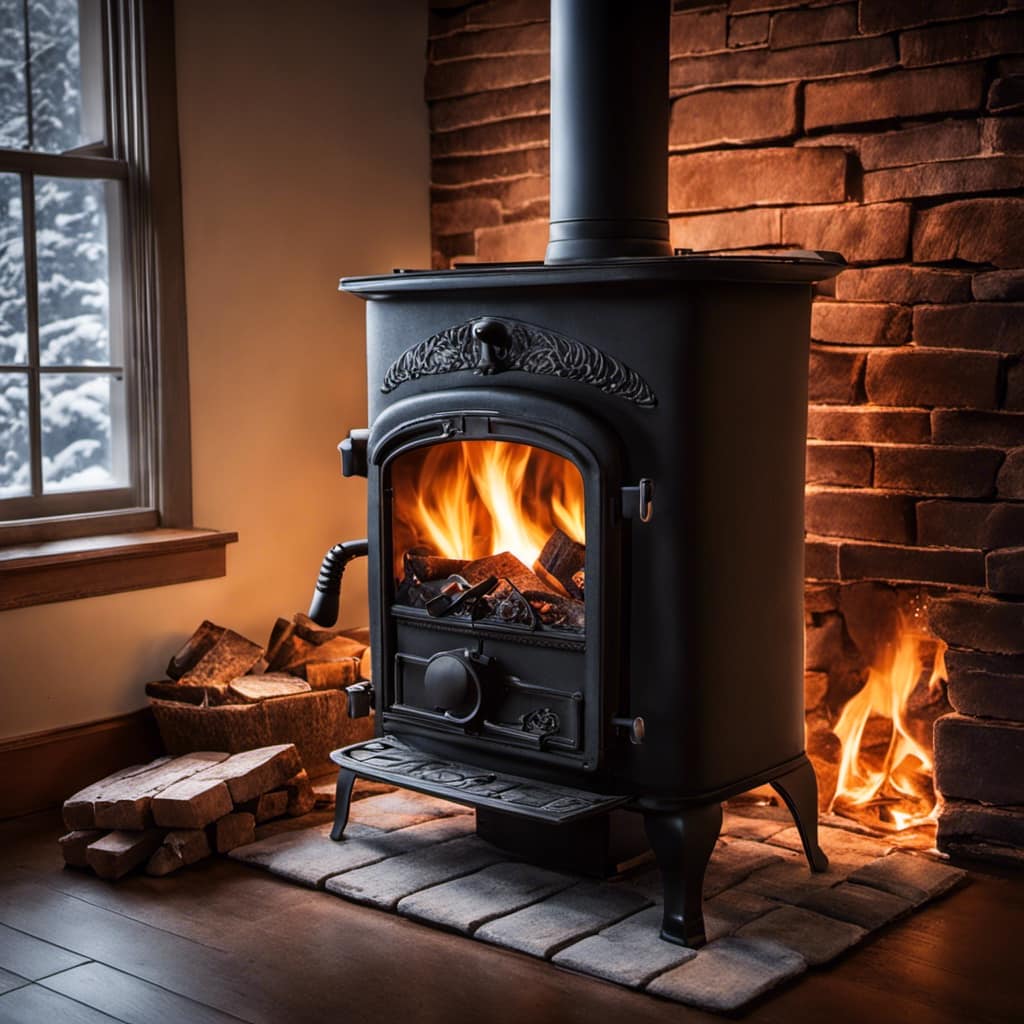
Get ready to keep your stove roaring and your home cozy!
Key Takeaways
- Regular ash cleaning is important to prevent the build-up of soot and creosote, reduce the risk of chimney fires, and improve indoor air quality.
- Factors to consider when determining cleaning frequency include burn time, ash accumulation, and proper ash disposal methods.
- A recommended cleaning schedule for wood stoves is at least once a week during the heating season, with variations based on wood usage and type.
- Signs that your wood stove needs ash cleaning include reduced heating efficiency, increased risk of chimney fires, and the presence of harmful chemicals and fine particles in the ash.
The Importance of Regular Ash Cleaning
I can’t stress enough how important it’s to regularly clean out the ashes from a wood stove. Proper maintenance is crucial for the efficient operation and longevity of your stove.
By removing the ashes regularly, you prevent the build-up of soot and creosote, which can lead to chimney fires. Clean ashes also allow for better airflow, ensuring optimal combustion and heat output.
Moreover, a clean stove improves indoor air quality by reducing the release of harmful particles and gases. It also minimizes the risk of carbon monoxide poisoning.
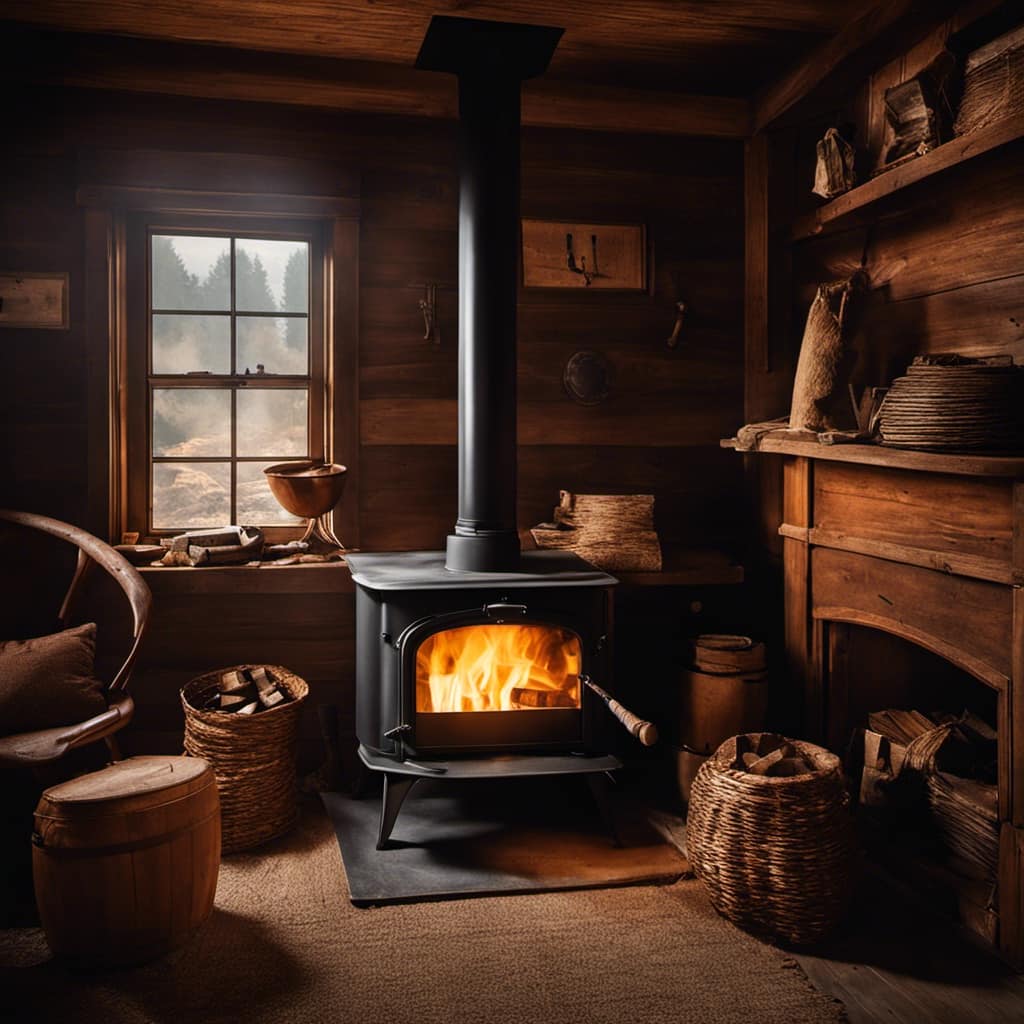
Additionally, cleaning out the ashes helps to prevent clogging of the stove’s components, such as the flue and vents, ensuring their proper functioning.
Factors to Consider When Determining Cleaning Frequency
Based on my experience and the size of the wood stove, I find it necessary to consider factors such as burn time and ash buildup when determining how frequently to clean. Here are three important factors to consider:
Burn Time: The longer you burn your wood stove, the more ash will accumulate. If you use your stove frequently and for extended periods, you may need to clean the ashes more often to maintain optimal efficiency.
Ash Buildup: A thick layer of ash can hinder the airflow in your wood stove, reducing its efficiency. Regular cleaning prevents the buildup of ash and ensures that the stove can effectively heat your home.
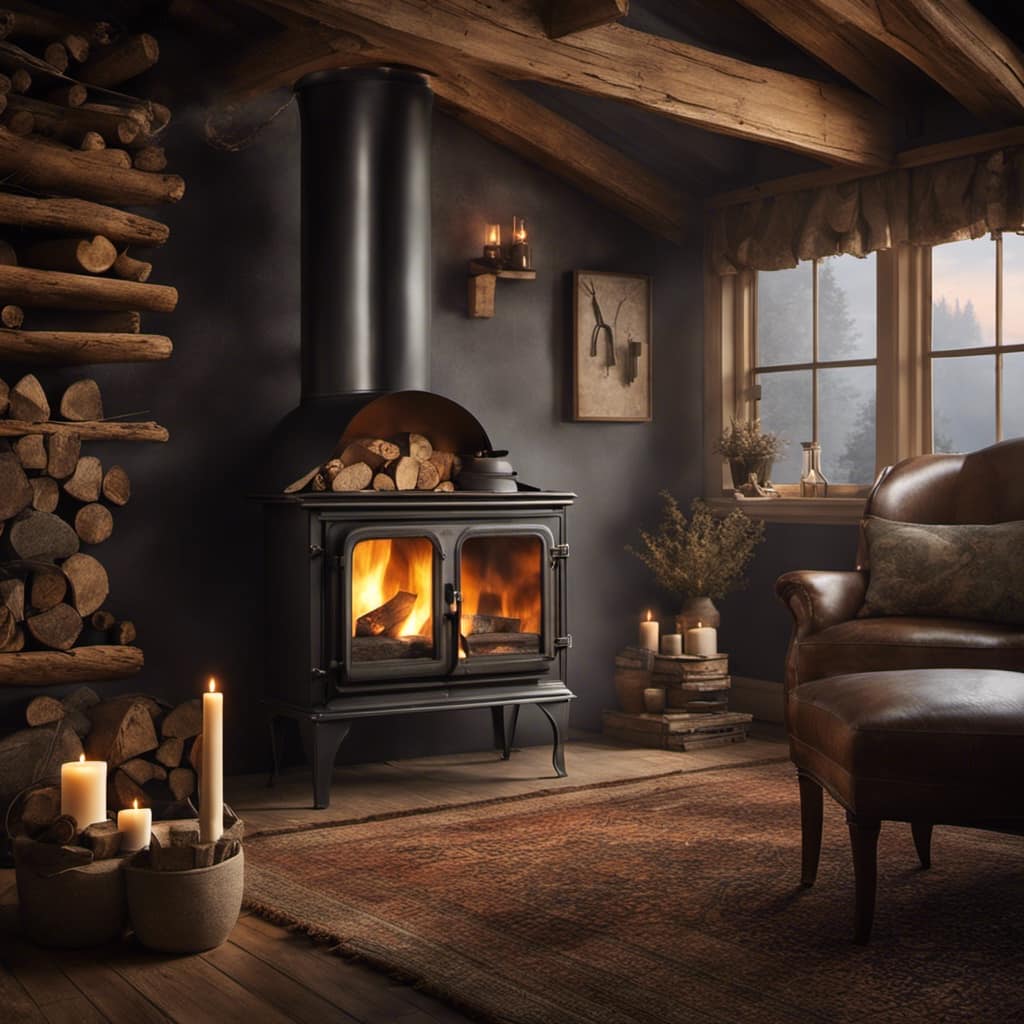
Ash Disposal Methods: Properly disposing of ashes is crucial for safety and preventing fire hazards. Always use a metal container with a tight-fitting lid to store and cool ashes before disposing of them in a designated area away from flammable materials.
Considering these factors will help you determine the appropriate frequency for cleaning the ashes from your wood stove, ensuring its efficiency and safety.
Recommended Cleaning Schedule for Wood Stoves
To maintain optimal efficiency and safety, it’s important to establish a regular cleaning schedule for my wood stove. Proper maintenance techniques and safety precautions are crucial to ensure the longevity and safe operation of the stove.
I recommend cleaning the ashes out of the wood stove at least once a week during the heating season. This frequency may vary depending on the amount of wood burned and the type of wood used. Cleaning involves removing the ashes from the firebox using a metal scoop or shovel and disposing of them in a metal container with a tight-fitting lid. It’s important to let the ashes cool completely before handling them to prevent any risk of fire.

Additionally, regular inspection and cleaning of the chimney and flue pipes should be performed annually by a professional to prevent the buildup of creosote and ensure proper airflow.
Following these maintenance techniques and safety precautions will help keep my wood stove operating efficiently and safely.
Signs That Your Wood Stove Needs Ash Cleaning
When the ash buildup in my wood stove reaches a certain level, it becomes evident through decreased heating efficiency and a smoky smell in the room. Neglecting to clean the ash from your wood stove can be dangerous and lead to several issues. Here are three signs that indicate your wood stove needs ash cleaning:
Reduced heating efficiency: As ash accumulates, it restricts airflow, making it harder for the fire to burn efficiently. This results in less heat being produced and a decrease in the stove’s overall performance.
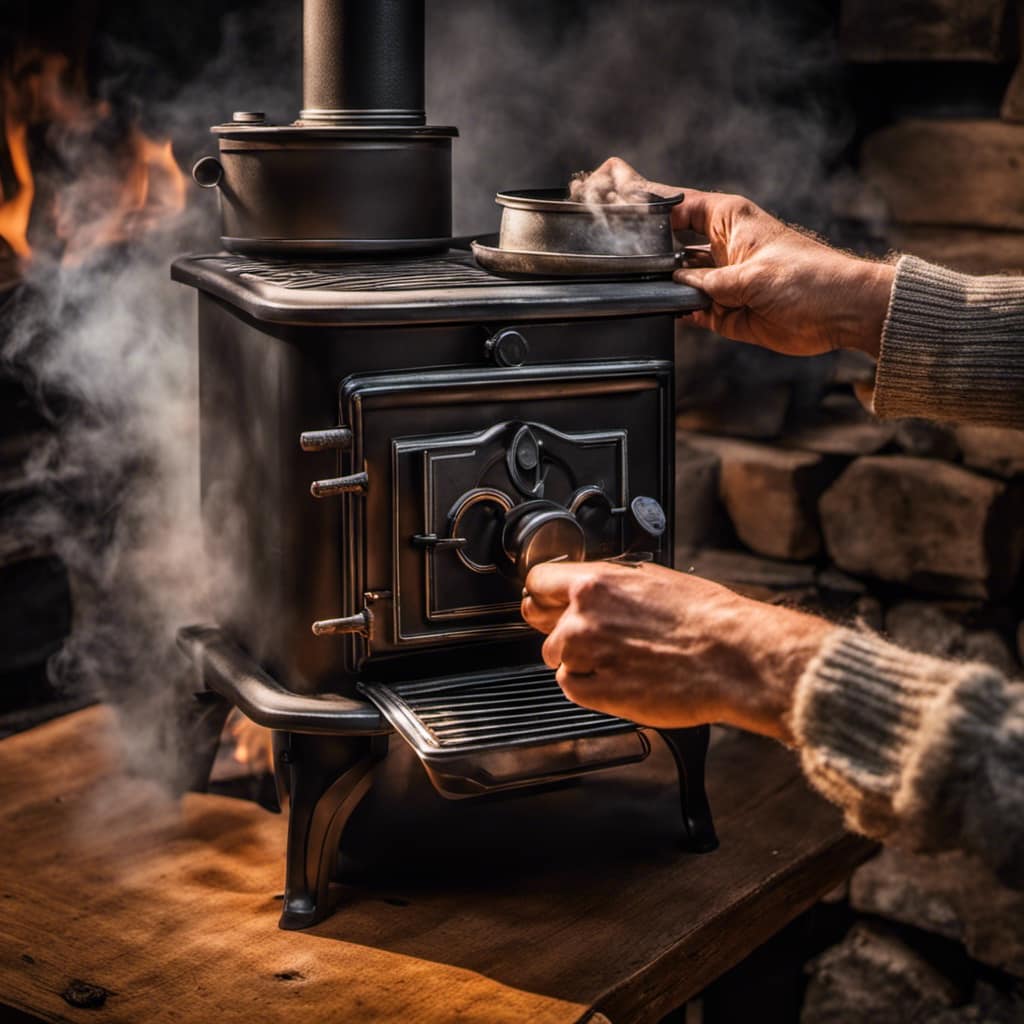
Increased risk of chimney fires: Ash buildup in the chimney can ignite and cause a dangerous chimney fire. Regular ash cleaning is essential to prevent these potentially devastating fires.
Health hazards: Ash can contain harmful chemicals and fine particles that, when released into the air, can irritate your respiratory system. Regularly removing ash from your wood stove helps maintain a healthy indoor environment.
To effectively remove ash from your wood stove, follow these methods:
Use a specialized ash shovel or vacuum designed for wood stoves to safely and efficiently remove the ash.
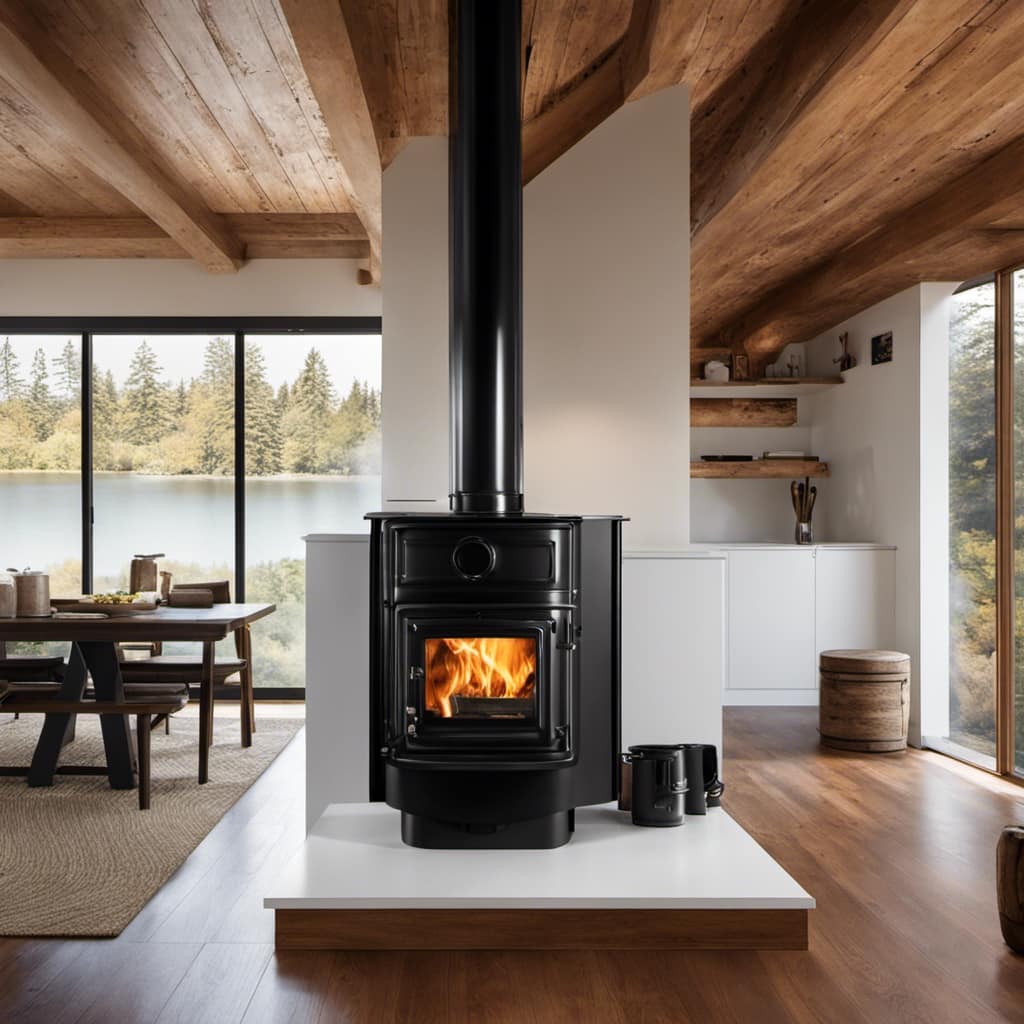
Allow the ash to cool completely before cleaning to avoid any risk of burns.
Dispose of the collected ash in a metal container with a tight-fitting lid to prevent accidental fires.
Tips and Tricks for Effective Ash Removal
I find it helpful to wear gloves and a dust mask when removing ash from my wood stove to protect myself from any potential irritants.
To effectively remove ash, you’ll need a few tools. A metal shovel is essential for scooping out the ashes. Make sure it has a long handle, so you can reach deep into the stove without getting too close to the hot coals.

A metal bucket or ash container is also necessary to safely transport the ashes outside. Alternatively, you can use a specialized ash vacuum designed specifically for wood stoves. These vacuums have a heat-resistant hose and a filter to prevent the ashes from being blown back into the room.
Whichever method you choose, always wait until the ashes have cooled completely before attempting to remove them. Safety should be your top priority when dealing with ash removal from your wood stove.
What Is the Proper Maintenance for Cleaning Ashes Out of a Wood Stove?
When it comes to getting ashes out wood stove, proper maintenance is key. Start by allowing the ashes to fully cool before removing them. Use a metal scoop or shovel to carefully scoop out the ashes and place them in a metal container. Clean the stove’s interior regularly to prevent buildup.
Frequently Asked Questions
Can I Use the Ashes From My Wood Stove for Any Other Purpose?
I can use the ashes from my wood stove for various purposes. Some of the common uses for wood stove ashes include as a fertilizer for plants, a natural cleaning agent, or for traction on slippery surfaces. However, it is important to properly dispose of wood stove ashes to prevent any potential hazards.
Are There Any Risks Associated With Not Cleaning Ashes Out of My Wood Stove Regularly?
Not cleaning ashes out of your wood stove regularly can pose serious risks. The build-up of ash can block airflow, decrease efficiency, and increase the chances of a chimney fire. Regular cleaning ensures safety and optimal performance.
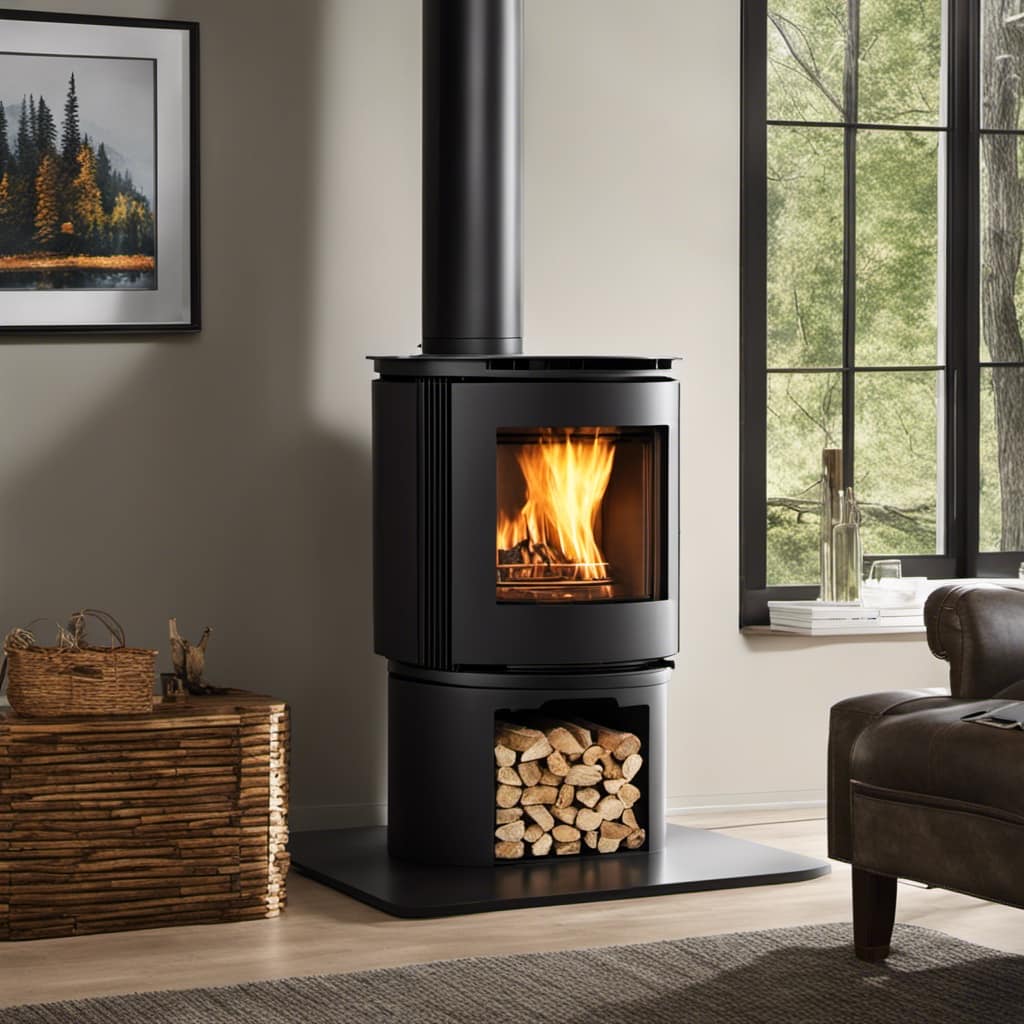
How Long Does It Typically Take to Clean Ashes Out of a Wood Stove?
When cleaning ashes out of a wood stove, it is important to do so safely without damaging the stove. Here are some tips for efficiently cleaning ashes and keeping your wood stove in good condition.
Can I Clean Ashes Out of My Wood Stove While It Is Still Hot?
Cleaning ashes out of a wood stove while it is still hot is not recommended due to safety concerns. It is best to wait until the stove has cooled down completely before attempting to clean out the ashes.
Is It Necessary to Wear Protective Gear When Cleaning Ashes Out of a Wood Stove?
It is necessary to wear protective gear when cleaning ashes out of a wood stove to ensure safety. Safety precautions are crucial to avoid any potential risks or injuries during the cleaning process.
Conclusion
In conclusion, regular ash cleaning is crucial for maintaining the efficiency and safety of your wood stove. Factors such as usage frequency and type of wood burned should be considered when determining the cleaning schedule. Remember to look out for signs like reduced heat output or difficulty in starting a fire, indicating the need for ash removal.
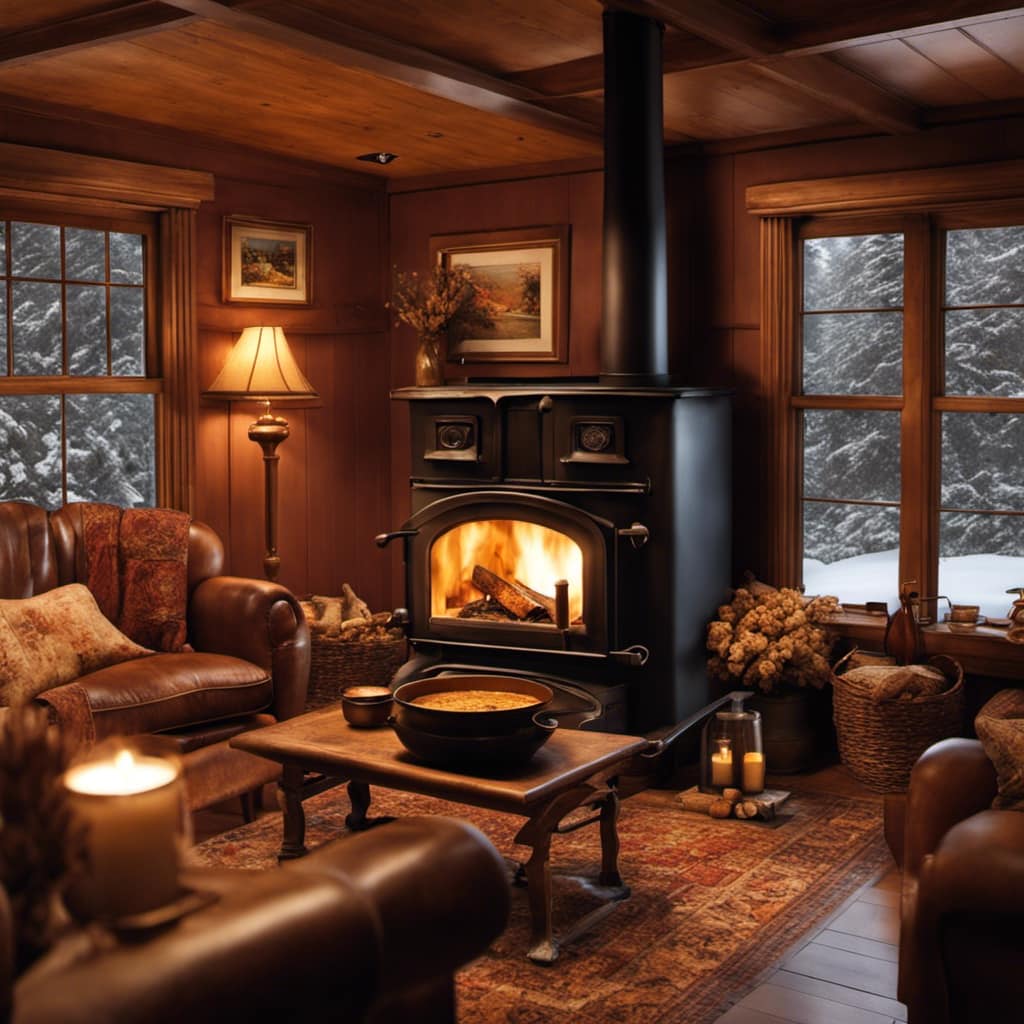
By following these tips and tricks, you can ensure effective ash removal and enjoy a well-functioning wood stove. So, why wait? Start cleaning those ashes today and keep your wood stove running smoothly.
Growing up surrounded by the vast beauty of nature, Sierra was always drawn to the call of the wild. While others sought the comfort of the familiar, she ventured out, embracing the unpredictable and finding stories in the heartbeat of nature.
At the epicenter of every remarkable venture lies a dynamic team—a fusion of diverse talents, visions, and passions. The essence of Best Small Wood Stoves is crafted and refined by such a trio: Sierra, Logan, and Terra. Their collective expertise has transformed the platform into a leading authority on small wood stoves, radiating warmth and knowledge in equal measure.




